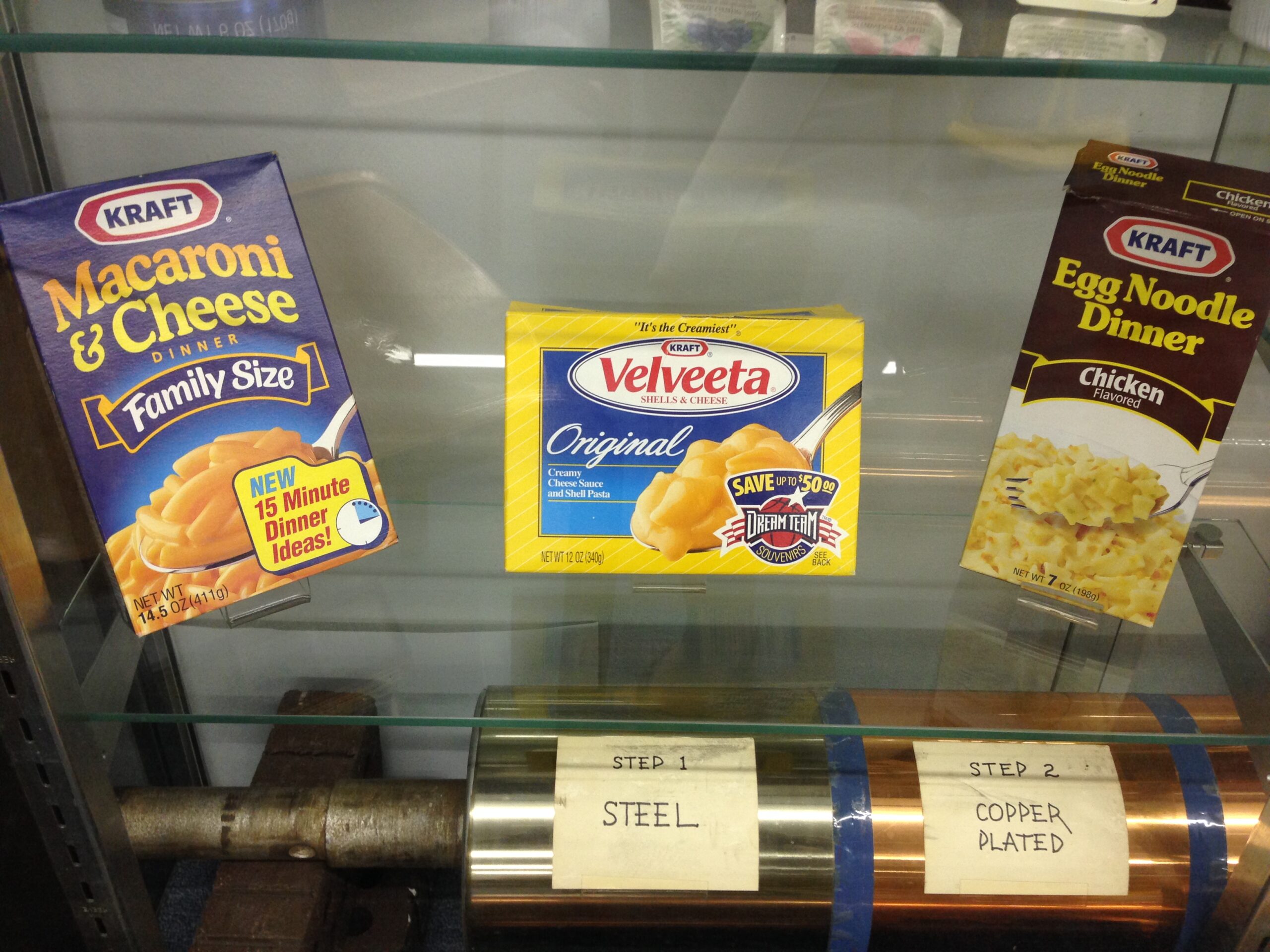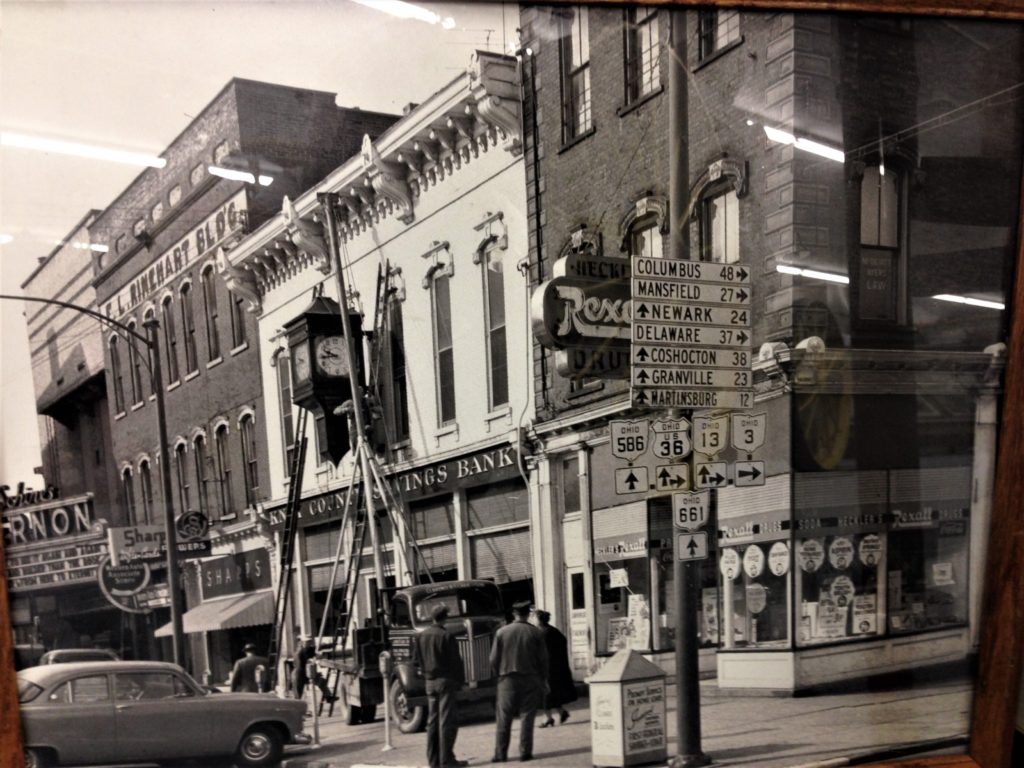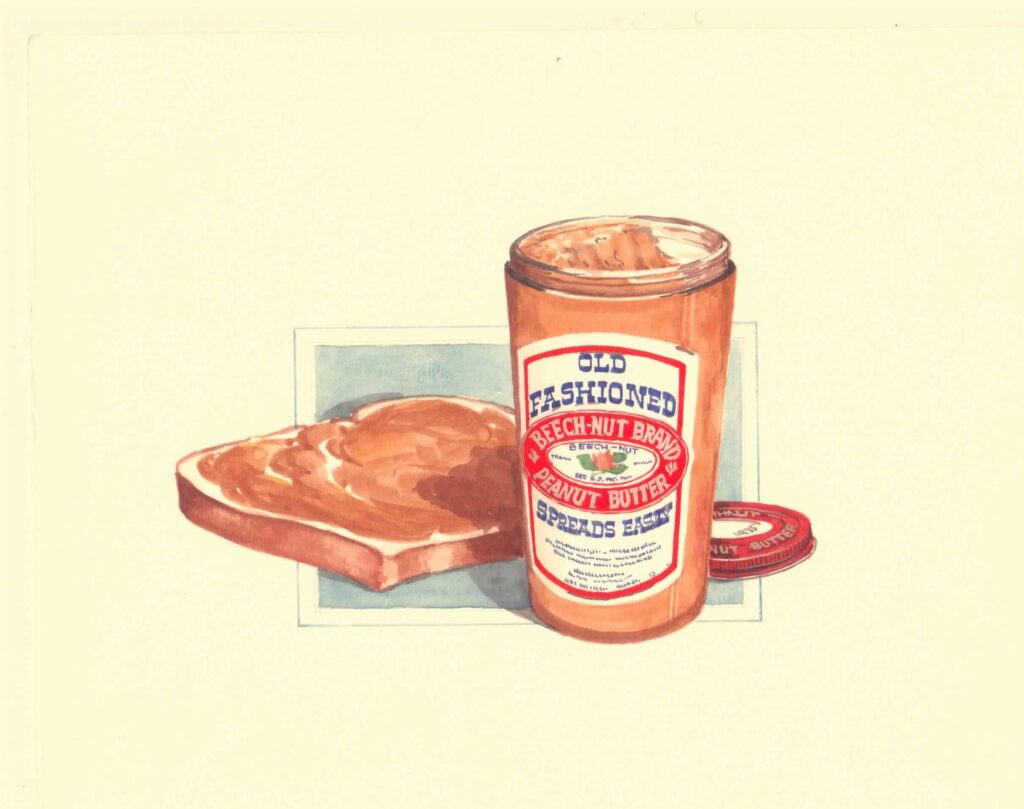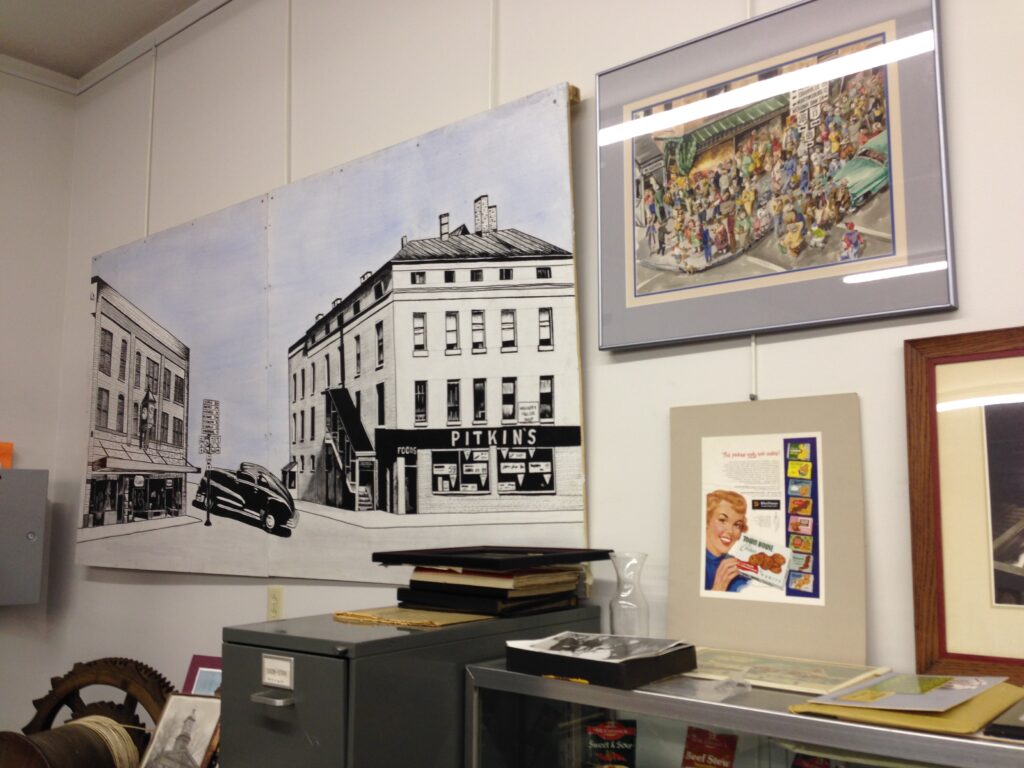With a transformative industry of convenience foods, packaged foods and self-service — and thousands of new brands following World War II — consumer product advertising, marketing and sales made tremendous advancements as industry sectors. In the 1950s, Vernon Johnson, his graphic designers and salesmen at Continental Can Co. were among the serious and creative thinkers on the vanguard of understanding rapidly changing consumer buying habits. With 1950s restraint, they were exploring on the leading edges of what transformed into the hip and stylish “Mad Men” binge on Madison Avenue in the early 1960s.
From the Mount Vernon (Ohio) News, Jan. 7, 1958…
Packages Designed For Woman Shopper Kiwanis is Told
Buying habits and methods of women were cited by Vernon Johnson, Continental Can Co. official, as the prime reasons why packaging has developed into a $12 billion business in the past three or four years. Speaking at the Kiwanis lunch Monday, Johnson said he was concerned only with the design or printing on the package. Her terms the egg “a wonderful symbol of packaging” but even eggs need a sign tht says, “Fresh” to insure their sale, he said.
Women, said Johnson, influence 85 percent of all sales, control 70 percent of the nation’s wealth, buy 90 percent of all household purchases and 62 percent of hardware sales. A survey made by a large New York City department store showed 80 percent of all men’s shirts were purchased by women, he said. Many cars are styled to appeal to women and many other products are packaged to attract or accommodate women, said Johnson. Ten years ago there were 2,000 different products in a supermarket while today the number is 5,000, said Johnson. The 27,000 supermarket outlets in the United States do 82 percent of the grocery business. He said the salesmen in the supermarkets today are the packages and therefore Continental Can Co attention of women shoppers.
Basic factors in developing packages are color, design and psychology. The latter, he said, results from studies of such things as the buying habits, age of customers and area to be served. For example, Johnson said West Coast-designed packages are way ahead of those found on the East Coast while packages designed to sell a product in certain southern states would fall flat in New England states.
“Best designs are those that interpret understanding of human nature,” said Johnson. Seventy percent of women shoppers rely upon “mental shopping lists” and 48 percent of purchases in markets are made on impulse, said Johnson.
A good package must do three things, said Johnson — attract attention, obtain interest, excite possession.
From The Newark (Ohio) Advocate, May 21, 1957…
Package Art Is Outlined For Rotary Club
Using an egg as his example of “perfect packaging,” Vernon P. Johnson, division art director for the Shellmar Betner Division of Continental Can Co., described the business of packaged design at the weekly Tuesday luncheon meeting of the Newark Rotary Club at the Warden Hotel.
The egg, Johnson said, is a perfect package contained in a functional design which protects the product from the manufacturer to the skillet. The problem of those artists who design packages found on grocery story shelves is to create a design eually as functional, but at the same time having a greater sales appeal than that of the egg alone.
Information Aids Sales
Additional information creates more sales, Johnson said. If the eggs are marked “fresh,” for example, their sales go up some 50 percent. If marked “fresh today,” their sales appeal is greater by another 25 percent.
In packaging food products for sale in grocery stores and super markets attractively the designer makes his package do the work of a salesman. And in order to sell itself, Johnson said, the package must attract attention, obtain the intrest of the buyer and excite the buyer to possess it.
Study Shopping Habits
Knowledge of how foods should be packaged to do their job of selling is obtained largely through studying the habits of women shoppers, Johnson said. The type of woman buyer who is primarily interested in ready-packaged foods — like ready-mixed biscuits or cut and packaged chicken — is the one to whom the package designer turns his interest. For it is she he wants to attract through his packaged design.
The package designer then, Johnson went on, has to study the theory of color, design psychology and general psychology in order to come up with a package that will compel sales.
Shopping Not Planned
Since 72 percent of a woman’s shopping is on an impulse, unplanned basis, the package must have a great sales appeal through the eye alone. It must, too, have a strong identity factor so that she’ll recognize it and buy it the next time she goes shopping, Johnson concluded.




